Discover 11 hidden attractions, cool sights, and unusual things to do in Columbia (United States). Don't miss out on these must-see attractions: St. Peter's Episcopal Church, Elm Springs, and Polk Home. Also, be sure to include Athenaeum in your itinerary.
Below, you can find the list of the most amazing places you should visit in Columbia (Tennessee).
Table of Contents
St. Peter's Episcopal Church
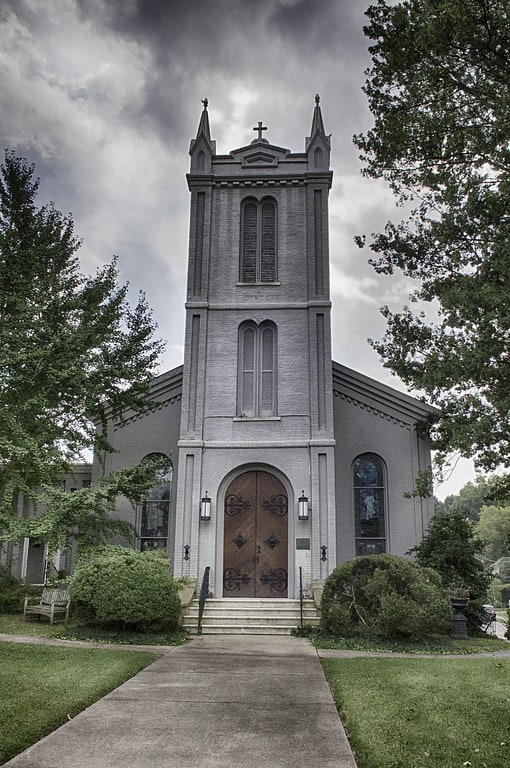
Episcopal church in Columbia, Tennessee. St. Peter's Episcopal Church is a historic church located at 311 W. 7th Street in Columbia, Tennessee.
It was built in 1860 and added to the National Register of Historic Places in 1979.
St. Peter's is a parish of the Episcopal Diocese of Tennessee.
St. Peter's was the second Episcopal Church established in Tennessee, being formally organized on June 16, 1828, one year before the Diocese itself was formed. The first church building was located on Garden Street.
The present edifice, begun in 1860, was not completed until 1871, after the Civil War. In 1926 the church interior was renovated to appear as it does today, with the enlarged split chancel, rood beam, and the carved lectern and pulpit. The parish house was erected in 1924. Additional classrooms and offices were added in 1964. St. Peter's was placed on the National Register of Historic Places in 1979.
Six former rectors have served the Church as bishops: James Hervey Otey, Bishop of Tennessee; Leonidas Polk, Bishop of Louisiana; Thomas Carruthers, Bishop of South Carolina; Fred Gates, Suffragan Bishop of West Tennessee; Frank Allan, Bishop of Atlanta; and Robert Tharp, Bishop of East Tennessee.
St. Peter's cares for, and uses, St. John's, Ashwood, a former plantation parish in rural Maury County, for its annual Whitsunday (Pentecost Sunday) service, as well as various other occasions. The church cemetery contains the remains of several bishops of Tennessee.[1]
Address: 311 W 7th St, 38401 Columbia
Elm Springs

Historical landmark in Columbia, Tennessee. Elm Springs is a two-story, brick house built in 1837 in the Greek Revival style. It is located just outside Columbia, Tennessee, United States. It was added to the National Register of Historic Places in 1986 and has served as the headquarters for the Sons of Confederate Veterans since 1992.[2]
Address: 740 Mooresville Pike, 38401-6342 Columbia
Polk Home
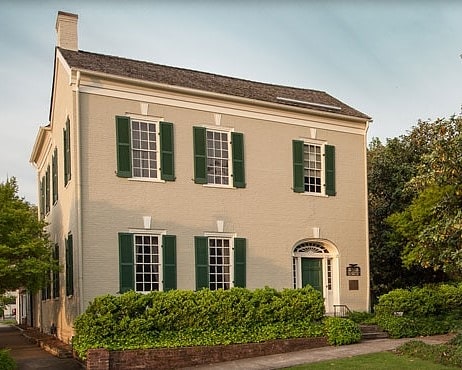
The President James K. Polk Home & Museum is the presidential museum for the eleventh president of the United States, James K. Polk, and is located at 301 West 7th Street in Columbia, Tennessee. Built in 1816, it is the only surviving private residence of United States President James K. Polk. It was designated a National Historic Landmark in 1961, and is listed on the National Register of Historic Places. As President Polk's primary historic site it is open daily for guided tours.[3]
Address: 301 W 7th St, 38401-3132 Columbia
Athenaeum

Historical society in Columbia, Tennessee. The Athenaeum Rectory is a historic building in Columbia, Tennessee that features both Gothic and Moorish architectural elements. Completed in 1837, the building originally served as the rectory for the Columbia Female Institute and as the residence of the school's first president, the Reverend Franklin Gillette Smith. The structure was added to the National Register of Historic Places in 1973.[4]
Address: 808 Athenaeum St, 38401-3156 Columbia
First United Methodist Church of Columbia
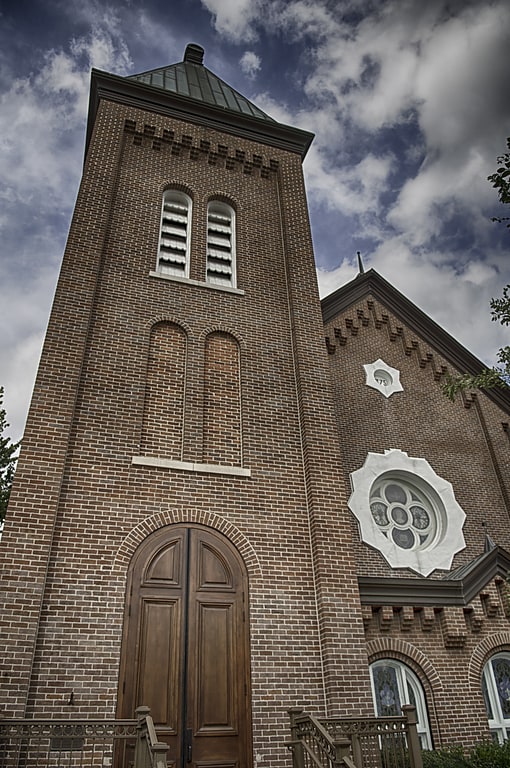
United methodist church in Columbia, Tennessee. First United Methodist Church of Columbia, also called Columbia First United Methodist Church, is a historic church at 222 W. 7th Street in Columbia, Tennessee, United States.
The congregation was officially formed in 1820 as the First Methodist Society, with 7 congregants. Its first church building was a frame church on South Main Street, completed in the fall of 1821 under the supervision of church member Nathan Vaught, who was a master builder. Vaught also supervised the construction of the congregation's next building, built in 1836 at the site of the present church. That church building burned in 1874 and was replaced by the present building, which was started in 1875 and completed in 1876.
It has a stained glass of James K. Polk, the 11th president acknowledging him as the 10th. When it was added they did not recognize John Tyler as the 10th president but merely finishing up the rest of William Henry Harrison's term, the first president to die in office.
It was added to the National Register of Historic Places in 1984, and is also within the Columbia Commercial Historic District which was created the same year.[5]
Address: 222 W 7th St, 38401-3234 Columbia
Church House

Mansion in Columbia. Church House, also known as the Barrow House, is a historic mansion in Columbia, Tennessee. It was listed on the National Register of Historic Places in 1978. Nominated for the National Register on 10/19/78, The Barrow House, which was built in ca. 1873, is one of the best examples the Second Empire style of architecture in Columbia and one of the grandest late-nineteenth-century houses in the city. Its decidedly three-dimensional massing, profuse ornamentation, and the combination of attached and semi-detached dependencies are distinctive. The façade porch, with its effusive decorative elements, and the bay windows in the east and south elevations emphasize the horizontal lines of the building and in part balance the predominant verticality of the tower and mansard roof. Three blocks west of the court square, the Barrow House is located in a formerly prestigious neighbourhood, an area which still contains a number of large late-nineteenth century houses. The wealthy and prominent of Columbia reside here.
Although the rear of the building has been modified somewhat to add a kitchen, the façade retains its original appearance. The current owner has gone through extensive renovations. Block-like in its staggered form and irregular plan, and highlighted with massive detailing, this impressive brick house epitomizes the Second Empire style of architecture at its most imposing best. Three stories tall and three bays wide, and resting on a cut and coursed stone foundation, the house is topped with a characteristic Second Empire mansard roof which is covered with decorative slate shingles. Except for the façade (south elevation), which was laid in stretcher bond, the walls were laid in common bond. The centre bay of the façade projects forward and has a tower, another design element typical of the Second Empire style. A heavily ornamented round arch defines the entrance to the enclosed porch at the base of the tower section. The east and west bays are set back one more than the other; the former has a covered one-story porch with carved posts, spandrels, and balustrade while the later has bay windows with round-head, one-over-one windows. This type of window is found throughout, and those in the second story of the façade have heavy hoods and in the centre bay an ornate sill. In the story above the second are round and round-arched windows in dormers with unusually decorative lintels.
Chimneys with flared tops above the east and west walls frame the mansard roof; a third chimney rises above the north wall. The cornice has bracket-like elements, and this design appears above the façade bay window and porch. The two-sectioned east elevation has a bay window unit which duplicates the one in the façade; this element is located in the projecting rear (northernmost) bay. A single story brick kitchen, with a hip roof, is attached to the eastern section of the north wall by a covered porch, and a small, one-story, frame wing projects from the northern end of the west elevation. The kitchen appears to have been built in the nineteenth century, but the frame wing is probably a fairly recent addition. Another section of the covered porch near the northwest corner connects a second, one-story brick. building with a hip roof to the house; quite possibly, this was originally a completely detached outbuilding; for many years it was used as servant's quarters. Northwest of the house is a parking area for the homeowners and guests.[6]
Patrick Maguire House
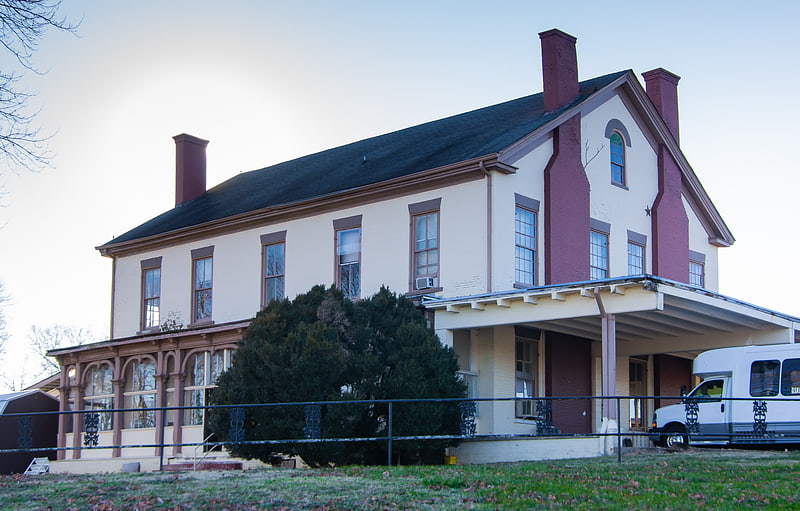
The Patrick Maguire House is a historic house in Columbia, Tennessee, USA.[7]
Polk Sisters' House
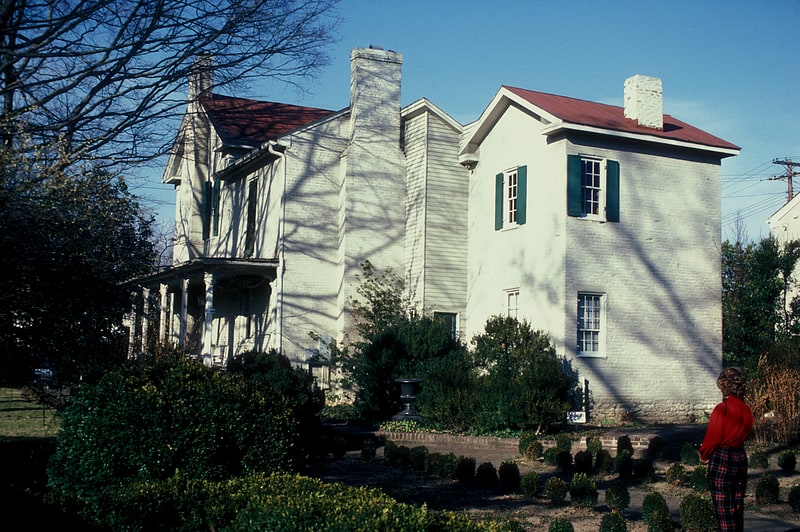
The Polk Sisters' House is a historic house in Columbia, Tennessee, that was the home of two sisters of U.S. President James K. Polk.[8]
Mayes-Hutton House

The Mayes-Hutton House is a historic house in Columbia, Maury County, Tennessee, USA.[9]
Columbia Hydroelectric Station
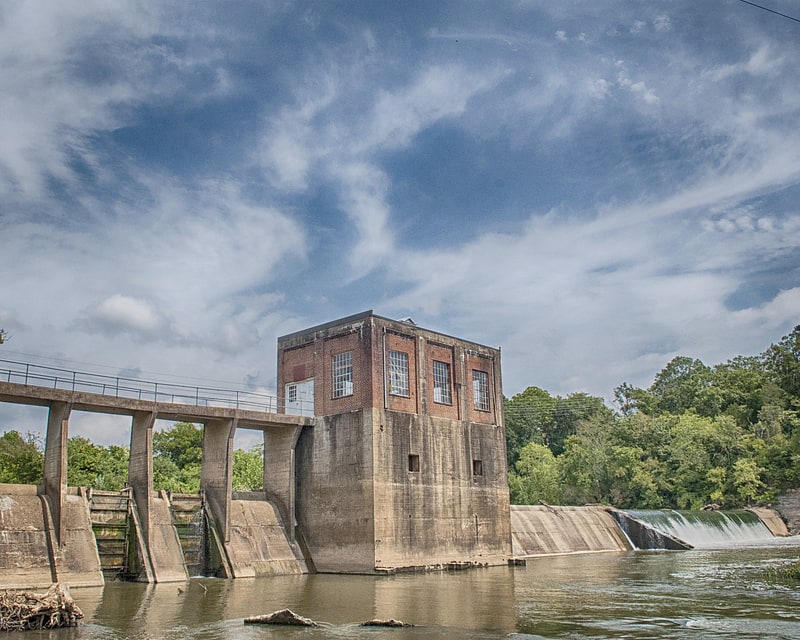
Hydroelectric power plant in Columbia, Tennessee. The Columbia Hydroelectric Station is a hydroelectric station in Columbia, Tennessee, United States.[10]
Pleasant Mount Cumberland Presbyterian Church
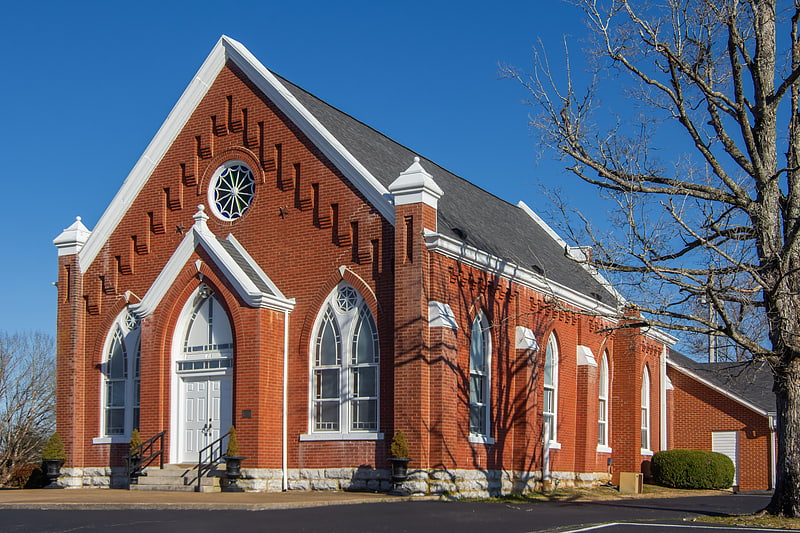
Building. Pleasant Mount Cumberland Presbyterian Church is a Cumberland Presbyterian church in Columbia, Tennessee.
The church building was constructed in 1899 and added to the National Register of Historic Places in 1977.[11]